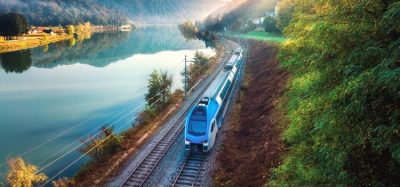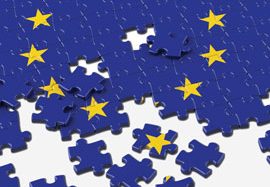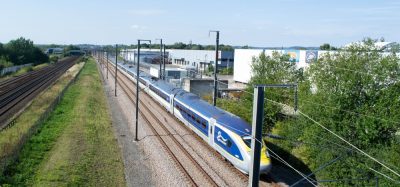Where is Europe’s end?
Posted: 3 November 2005 | | No comments yet
More than one year has already passed since the European Union was enlarged by the ten new Member States. In Poland, appraisals of economic and social effects of this historical event are, by and large, positive. A lot of expectations have been satisfied, while most of the misgivings expressed before 1st May of 2004 on both sides – in the ‘older’ EU15 and new accession countries – have proved greatly exaggerated.
More than one year has already passed since the European Union was enlarged by the ten new Member States. In Poland, appraisals of economic and social effects of this historical event are, by and large, positive. A lot of expectations have been satisfied, while most of the misgivings expressed before 1st May of 2004 on both sides – in the ‘older’ EU15 and new accession countries – have proved greatly exaggerated.
More than one year has already passed since the European Union was enlarged by the ten new Member States. In Poland, appraisals of economic and social effects of this historical event are, by and large, positive. A lot of expectations have been satisfied, while most of the misgivings expressed before 1st May of 2004 on both sides – in the ‘older’ EU15 and new accession countries – have proved greatly exaggerated.
The date given above is a only a ceremonial landmark. The process of integration for the EU10 with the rest of the Union started much earlier, is ongoing, and a large amount of water will flow in the Vistula or Elbe before it is accomplished. Incontestably, the Accession Treaty was a good turning point for all areas of European co-operation but it concerned one instant and the history never stops, even for a while. This is no different to the European railway system. The provisions of the Treaty on railway transport have resulted primarily from the experiences of the preceding co-operation among the railway administrations.
For the railways the most crucial decisions were taken much earlier. The Directive EEC 91/440, and subsequent agreements from Crete and Helsinki gave rise for upcoming decisions in the area of transport policy and also in the states that were not yet members of the European Economic Community. Moreover, in 1991, in some of those states, integration was viewed in terms of political fiction. This would mean that the ‘railway integration of Europe’ had commenced 13 years earlier than political integration.
The interoperability of the rail networks is undoubtedly the major impediment. Thorough surmounting of obstacles created in the historical process, largely in the catenary power supply, is a matter of a very long period of time. Thus, what remains to be done is to start co operation in other areas, first and foremost in defining common lines of development. The train control system and telecommunication are one of them. PKP (Polish Railway Lines Company) are carrying out intensive works for implementing the traffic management system (ERTMS), train control system (ETCS) and mobile radio communication (GSM-R) along the main transport routes. We are contributing to the works of competent teams of international railway organisations.
Interoperability is evidently only a means to an end, not an end in itself. Therefore the systems mentioned above are earmarked in the first instance for implementation across the grid of international transport corridors that are important from the point of view of interoperability of the European network and at the same time linking major metropolitan areas and industrial centres in Poland. Priority is given to sections of the E-20 and E-30 main lines running from Poland’s Western border to Warsaw and Cracow; the whole Polish section of the E-65 main line from the Czech and Slovak border, through Warsaw up to Gdansk; the CE-59 from Wroclaw to the ports in Szczecin and Swinoujscie; and the E-75 from Warsaw to the Lithuanian border. Regardless of that, our target plans include deployment of the systems on other important lines located in addition to the mentioned sections.
At this point we return to the title of this article. Europe’s end is clearly not in Warsaw and Cracow, nor is it at Poland’s Eastern frontier. Historia magistra vitae: the borderline of the enlarged Europe is moving East. Today, the EU borders delineate for railways a zone of unrestricted movement of people across the opened internal borders. This is the field for competition in passenger services, for which railways hold significant advantage against road and air transport, even in comparison with low-cost airlines.
The economic boom in China, growing economic trends in other East Asian countries, good economic results of Russia, Ukraine and Kazakhstan – all illustrate great opportunity for railway transport. The barrier is the different track gauge, but the Polish SUW-2000 system for automatic gauge changing and other renowned technical solutions, including acceleration of bogies interchanging, make it possible to expand the capacities of border crossings. That is why from the beginning we need to start considering the interoperability expansion to the East in order to benefit from the advantages of railways over long distance sea shipping. For example, greater speed and less environmental threats.
Expected increase in East-West traffic until 2020 (according to the estimates of the Polish Ministry of Infrastructure) will range from 21- 34 per cent. The forecast takes existing infrastructure and planned modernisation works into account. I believe these assessments could be enhanced several times, if more favourable conditions for railway operators are created. Railway infrastructure managers from countries beyond the EU Eastern border need to get involved to co-operate on that issue.
It will be possible to talk about a veritable success of the railways only when a first container loaded on a wagon at the terminal in Seoul, Shanghai or Nakhodka reaches a terminal in Glasgow, Barcelona or Naples without transhipment.
Europe does not end at the Bug river line, nor at the Ural chain. Let’s leave the laying down of borders to politicians and geographers. Railways were invented for crossing borders, not creating them.
Stay Connected with Global Railway Review — Subscribe for Free!
Get exclusive access to the latest rail industry insights from Global Railway Review — all tailored to your interests.
✅ Expert-Led Webinars – Gain insights from global industry leaders
✅ Weekly News & Reports – Rail project updates, thought leadership, and exclusive interviews
✅ Partner Innovations – Discover cutting-edge rail technologies
✅ Print/Digital Magazine – Enjoy two in-depth issues per year, packed with expert content
Choose the updates that matter most to you. Sign up now to stay informed, inspired, and connected — all for free!
Thank you for being part of our community. Let’s keep shaping the future of rail together!







